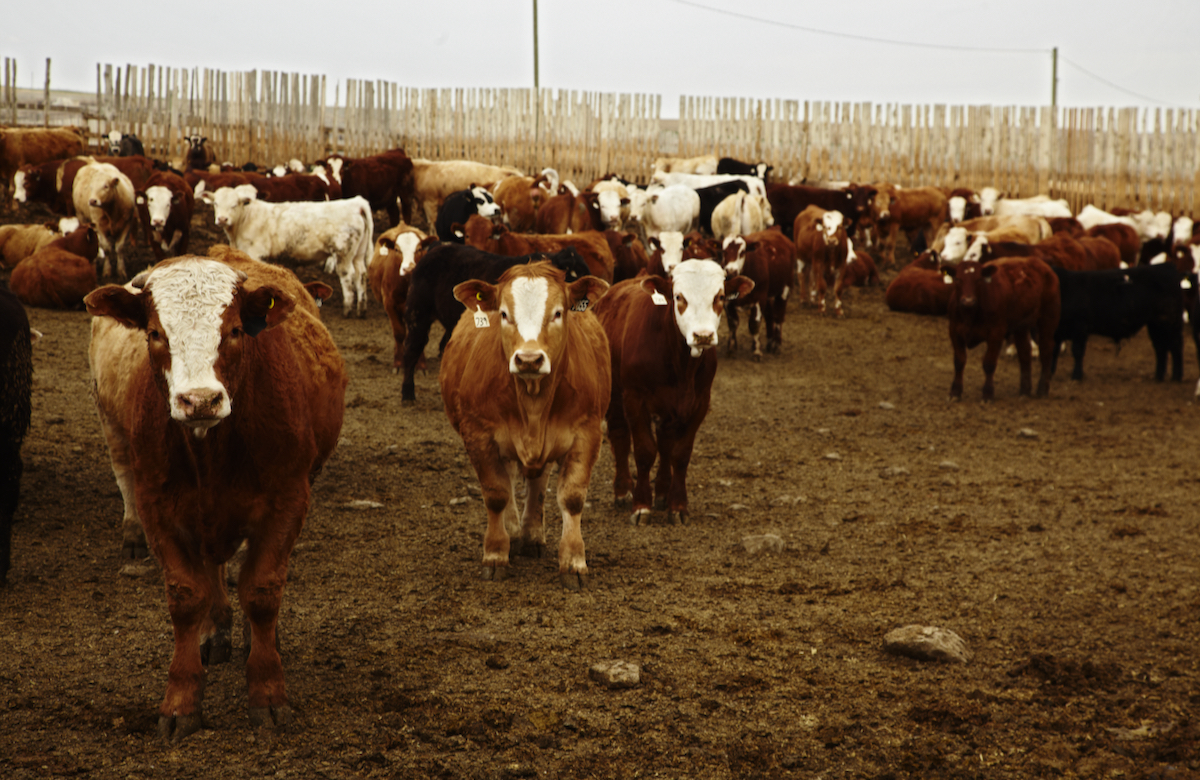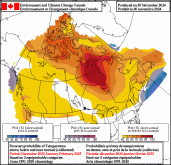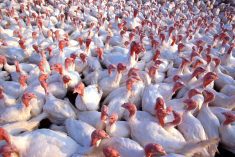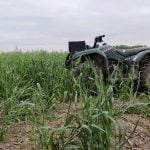Early data from federal pesticide regulators appear to suggest Ontario’s bee yards are moving past a spell of unusually high death losses seen around the 2012 and 2013 planting seasons.
Combining the numbers of acute honey bee mortality “incidents” by bee yard in Ontario in the 2015 pre-planting and planting periods, up to June 11, Health Canada’s Pest Management Regulatory Agency (PMRA) counted 46 affected yards.
That’s down from 79 in the pre-planting and planting periods combined in 2014; 260 in 2013; and 241 in 2012.
The new PMRA figures, obtained Thursday by Grain Farmers of Ontario (GFO) and the Canadian Seed Trade Association (CSTA), thus show declines of 82 and 70 per cent in incidents in the 2015 and 2014 periods respectively against the 2013 level.
Read Also

U.S. livestock: Cattle at fresh highs, hogs weaken
Cattle futures on the Chicago Mercantile Exchange climbed to fresh highs on Tuesday, as tight supplies and the ongoing closure…
By comparison, mortality “incidents” reported during the overwintering period in early 2015 sat at 31 unique yards — the same number reported in the same period in 2014, up from two in 2013.
GFO, in a release Thursday, said the data suggest “the federal government’s leadership on neonicotinoids through improved best practices has been successful.”
The PMRA early last year imposed new measures to limit bees’ exposure to dust from some types of equipment used to plant corn and soybean seeds pre-treated with neonicotinoid pesticides.
The agency restricted farmers’ use of seed flow lubricants — the products used to prevent planters from clogging with sticky neonic-treated seed. Bayer CropSciences’ “Fluency Agent,” billed as reducing “fugitive” pesticide dust, became the lone approved lubricant; talc and graphite were no longer permitted.
The CSTA, in a separate release Thursday, said the data show “the seed industry’s unprecedented action to protect bee health is having a very positive impact.”
The figures “are a great start; however, today’s numbers do not mean that we can stop working to protect bee populations,” CSTA president Dave Baute said in the association’s release.
GFO chairman Mark Brock, however, took aim also at the Ontario government’s plans to restrict corn and soybean growers’ use of neonic seed treatments, to be phased in starting this summer.
“Ontario’s rush to be the first in North America to restrict neonicotinoids is on track to cost rural Ontario’s economy more than $600 million a year, to solve a problem that it appears the federal government has already addressed,” he said Thursday.
The provincial environment ministry, GFO said, is “ignor(ing) the self-reported poor hive management practices of beekeepers, which beekeepers believe contributed to higher-than-normal mortalities in years prior.”
Ontario beekeepers “readily admit to the province that poor hive management by beekeepers in four areas” — starvation, weak colonies, fungal infections and mite infestation, plus weather conditions — “are also likely to blame for bee mortalities,” Brock said.
PMRA noted that while the death losses seen in 2012 occurred around planting time, increases in incident reports of poorly performing hives “later in the (growing) season” were seen in 2013 and 2014.
It could be, PMRA said in a separate report in November, that beekeepers have become “more vigilant in reporting unusual symptoms observed in their colonies, as well as more aware of the process of reporting these issues” to federal and provincial officials.
In 2013, PMRA said, some of the colonies affected later in the season had pesticide residues present in the hives, while other affected colonies “did not have any measurable residues, making it difficult to determine whether or not pesticides were a contributing factor to the effects reported.”
It’s also unclear, PMRA said in November, how “widespread” these effects were, as a “small number of beekeepers account for the majority of reported colony effects.”
In 2014, the agency said, three beekeepers accounted for over 72 per cent of reported incidents. –– AGCanada.com Network















